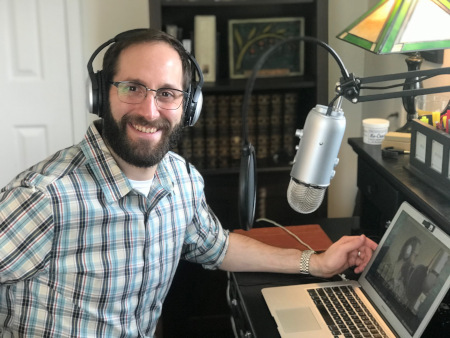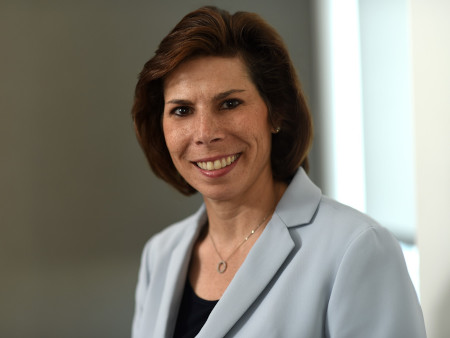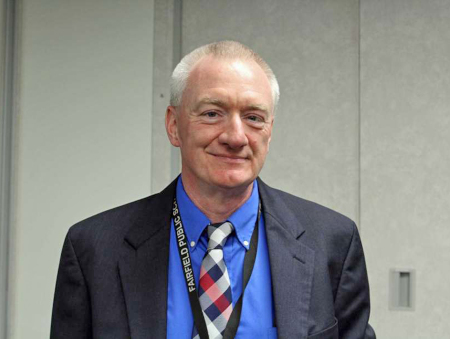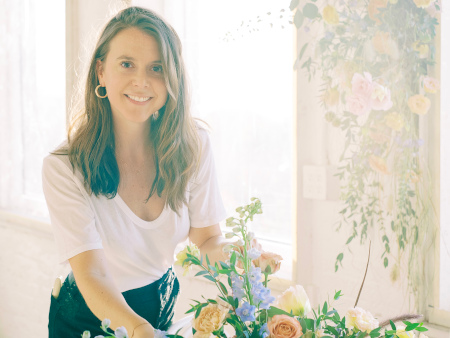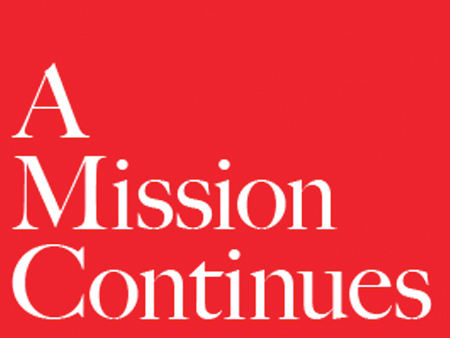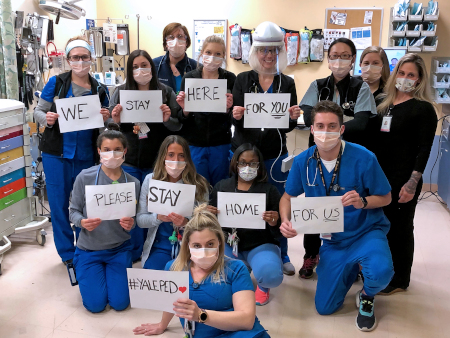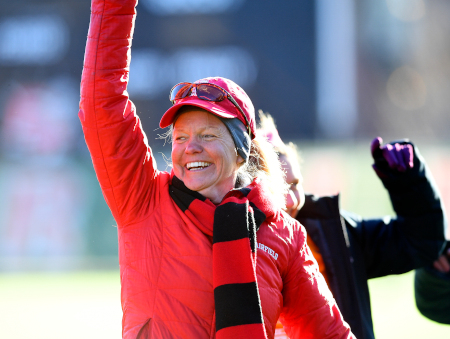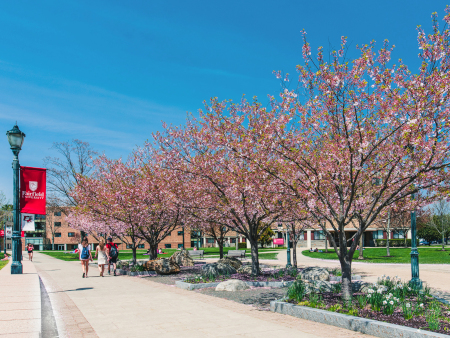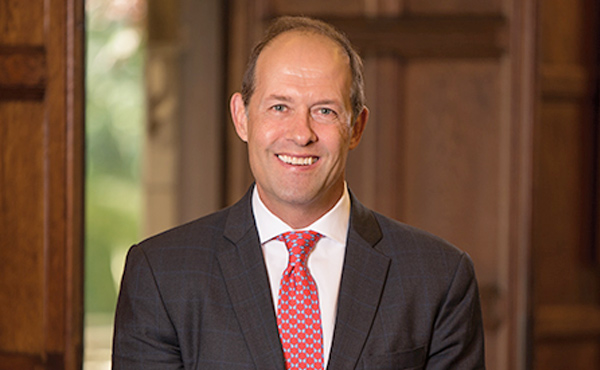Fairfield faculty and students pivoted to innovative virtual learning, creating remarkable teaching moments along the way.
When we teach, we emphasize applications to current events, and right now there is a massive, confusing, and understandably scary current event. political science can help us understand the world, and i see it as my job to help students understand what is happening by applying our studies to the situation.
— Aaron Weinstein, PhD, Politics Professor
Following the University announcement in March, which said all classes would be moved to remote learning after the spring recess due to the coronavirus (Covid-19) outbreak – and in accordance with national, state, and local health directives – Fairfield faculty led the charge in pivoting to teach through online platforms with speed and creativity, building upon its pre-existing infrastructure and professional experience in online education.
More than 1,500 of the University’s graduate and undergraduate courses migrated to remote learning, ensuring that academic instruction continued immediately following spring recess, and providing students the opportunity to earn their credits for the semester, as well as the opportunity to stay on track toward degree completion and their graduation date. That meant that hundreds of faculty members had to swiftly modify their courses to include remote instruction and, in many cases, develop other creative ways to engage students.
Professors’ home offices and dining rooms became classrooms, and students turned their bedrooms, basements, and kitchens into study halls — together, doing their best to put aside distractions to keep the academic work of the University on track.
Associate Vice Provost for Pedagogical Innovation & Effectiveness Jay Rozgonyi said the move to remote learning involved adapting seven simple principles. The move was announced on March 11 and was underway by March 16.
Rozgonyi shared the seven principles: “Don’t forget about your larger course goals and outcomes; stick with a technology platform you know; keep communication flowing; mix synchronous and asynchronous activities (group projects, online discussion, and multi-part assignments); collect and comment on work submissions electronically; curate and deliver content in a variety of ways; and carefully consider testing options.”
“It has gone remarkably well, considering we have 600 instructors,” he added.
For Robert Nazarian, PhD, assistant professor of physics, the first thing he wanted to do with his general physics courses was check in with his students and hear what they had to say about the transition to remote learning.
“Students were still trying to find community in this new way of doing things,” he noted. “In class, they sit at tables collaboratively and work together to answer questions on white boards.”
After consulting with his colleagues on the best way to keep this spirit of collaboration alive, Dr. Nazarian opted to use Zoom’s “breakout rooms” feature for small-group collaboration, to model what his students were accustomed to in the classroom. At times this meant placing them in the same groups they’d been in during class, and at other times they were sorted into groups at random.
“I took a poll on whether to select groups randomly or the same as class, and it was split right down the middle, so I alternated,” he explained. “I tried to include both, to get different points of view and get them to think differently about problems and problem-solving strategies.”
Meanwhile, Dr. Nazarian’s colleague, visiting professor of physics Robert Cordery, PhD, worked with his colleagues to set up, run, and record five lab experiments and two in-class demonstrations for students to view online.
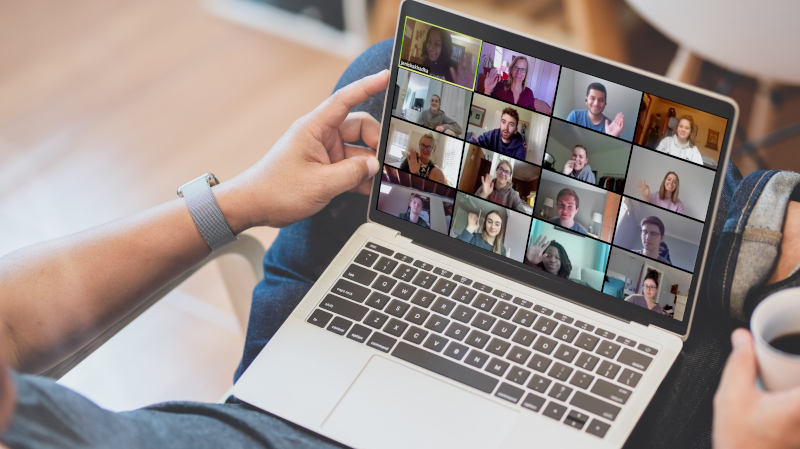
The video conferencing tool Zoom allowed for “face-to-face” connection while continuing courses remotely.
Sharing the videos — which ranged in topic from magnetic force to light diffraction — with his physics colleagues, Dr. Cordery said he also used the virtual collaboration tool Quip in his courses, so that he could see how students were preparing their lab reports and give feedback as they worked on them. He further supplemented his general physics lessons with additional videos he found online.
The hard sciences weren’t the only disciplines where faculty creatively adapted to the remote teaching format.
Nursing students spend much of their time working in actual hospitals, which posed a different set of challenges according to Linda Roney, EdD, RN-BC, CPEN, CNE, assistant professor and undergraduate nursing program director at the Marion Peckham Egan School of Nursing and Health Studies.
“I supervise nine senior nursing students as they work in the hospital for their 110 hours of final clinical experience in areas such as the Emergency Department and Intensive Care Unit,” she said during an interview in April. “Some of our students continue to work at hospitals near home, in roles that they had before the pandemic, as nursing assistants and unit secretaries. We started using Zoom during our weekly meetings because some of the students would be working a shift at the hospital and would break way for our meeting.”
Others of Dr. Roney’s students were already accustomed to remote instruction, but they had additional adjustments to make — for starters, returning to the United States from their study abroad experience in Galway, Ireland.
“They didn’t miss a single class with their return trip home,” Dr. Roney said, “and I actually added a live class to check in with them the Monday after spring break.”
The Covid-19 pandemic isn’t just a logistical challenge for instructors, of course; it is also a worldwide historical event in its own right. And so, many faculty members found ways to actively involve and engage students in the implications of the pandemic, through the prism of their class work.
Assistant professor of history Silvia Marsans-Sakly, PhD, adjusted her course-work to offer students the chance to document their own history of living through the coronavirus pandemic.
“I decided that I could not waste this historic opportunity to have students experience what it is like to create history, so I gave them all a research task of documenting and analyzing their experience of Covid-19 in 250-500 words every day (except weekends),” she explained.
With instruction to write for audiences 100 years from now, Dr. Marsans-Sakly requested her students “keep a journal incorporating their individual experience and analyses of the pandemic from their disciplinary perspective using three outside sources, including articles, social media posts, pictures, memes, short videos, etc.”
For assistant professor of politics Gayle Alberda, PhD, and visiting professor of politics Aaron Weinstein, PhD, making the shift to remote learning was the catalyst to create podcasts. Their “Plugging into Politics” broadcast quickly made its virtual debut to students via Blackboard.
“The coronavirus is a seminal event in all of our lives, but especially for students who may not remember the Great Recession very well, and who certainly do not remember 9/11,” Dr. Weinstein explained. “When we teach, we emphasize applications to current events, and right now there is a massive, confusing, and understandably scary current event. Political science can help us understand the world, and I see it as my job to help students understand what is happening by applying our studies to the situation.”
With themes ranging from the virus’ effect on federalism, the U.S. economy, environmental policies, and the 2020 election, Dr. Alberda and Dr. Weinstein have navigated their new virtual territory with the help of some expert guests, such as Olugbenga Ajilore, PhD, senior economist for Center for American Progress, and political leaders like Connecticut State Senator William Haskell (D-26).
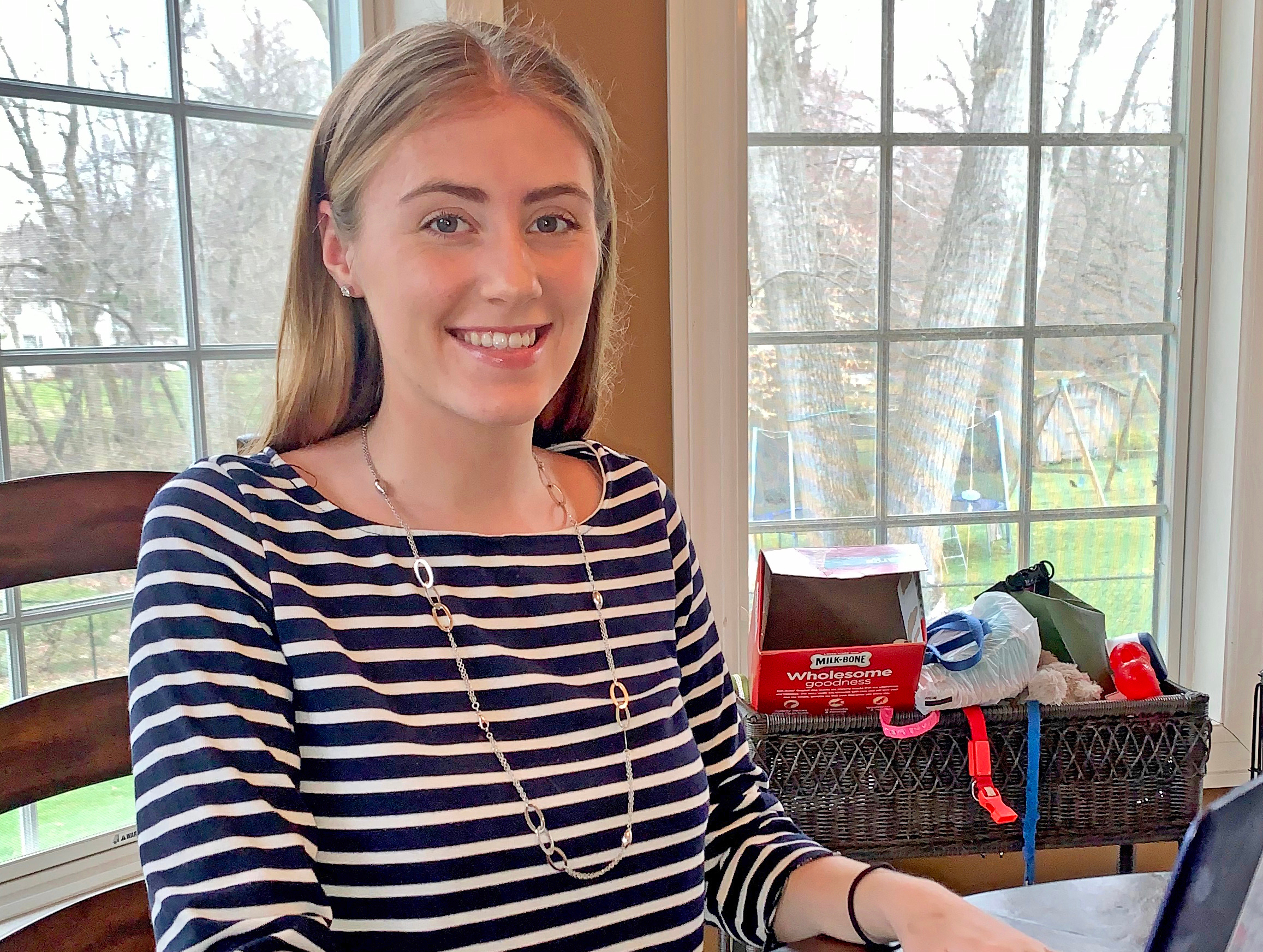
Working from home, Tara Bailey ’20 will continue her spring internship with Stamford-based Americares through the summer.
Associate Professor Bryan Ripley Crandall, PhD in the Graduate School of Education and Allied Professions, used Zoom’s breakout rooms to divide readings between his students, encouraging them to create their own interactive presentations to share with the class. The results, Crandall said, were admirable and he found himself “beyond impressed” with students’ videos, slides, and delivery of the material they studied.
While faculty members have them leaning into virtual classes, students have also had to make adjustments outside of classwork. Politics and international studies major Tara Bailey ’20 began the spring semester with an internship at the Stamford-based office of Americares, the disaster relief and global health organization, in conjunction with her humanitarian action minor.
Moving into a virtual workspace at home, Bailey embraced the timely experience of her internship as she and her coworkers tackled a Covid-19 response plan. “Americares is partnered with over 4,000 health clinics worldwide, and since I am on the emergency preparedness team, we have been compiling information on how to best be prepared [and] handle the pandemic at their clinics,” she explained.
Bailey has helped distribute information on communication, staff safety, resources, documentation, patient management, and health center operations — all while working offsite, using Zoom and other messaging platforms.
As part of Americare’s Covid-19 Emergency Preparedness Team, her internship has been extended through the summer. “It has been an amazing experience. I’ve learned so much on how clinics have to operate. It is so rewarding and exciting to work on something real, where I actually see the impact my work has on a pressing and current issue,” she said.
As demonstrated in the above examples, Fairfield is committed to excellence in education at all times, whether face-to-face, online, or transitioning to remote learning as circumstances may require. This dedication remains steadfast as we continue to evolve our educational modality in response to the current landscape.
Over the course of the spring semester, the Fairfield learning community transcended the digital divide, finding creative solutions to continue teaching and learning. One thing is for sure: the Ignatian mission to transform the world through education — and educate the whole person along the way — continues at Fairfield.
